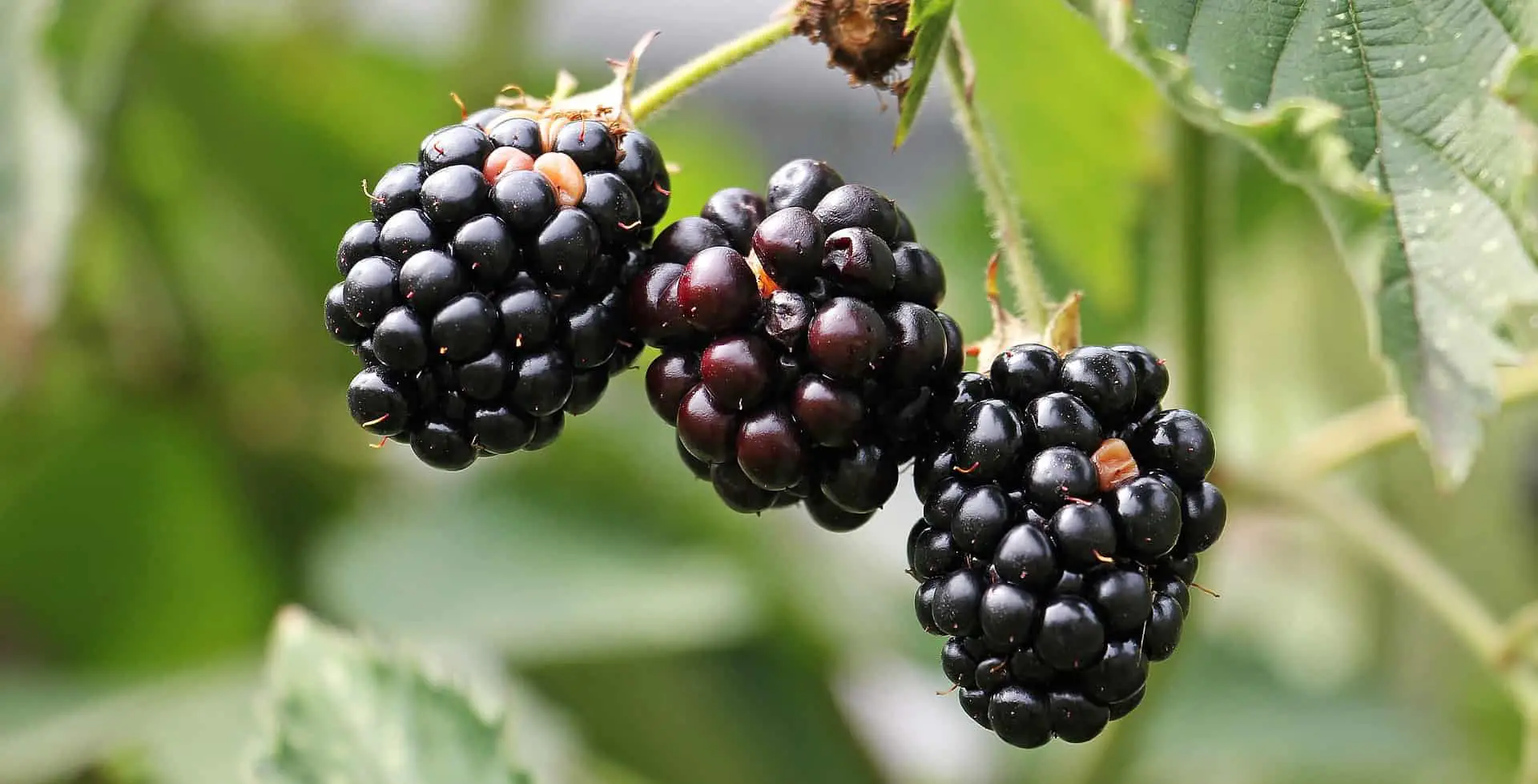New Hampshire is a small state in New England with a lot to offer the outdoor enthusiast. Once you travel north of Concord, it’s easy to find beautiful places to hike and seek out wild foods hidden in the natural world. New Hampshire’s well-known wild plants include wild mushrooms like chicken of the woods, fiddleheads, and a variety of wild berries. While most people stick to the grocery stores, and a few venture to the small farms with u-pick options, the sweetest way to gather a handful of edible plants is to forage them for yourself on a good hiking day. In New Hampshire, this often means looking for wild berries.
Wild Berries In New Hampshire
There are so many options for foragers in this small state. There are black raspberries, serviceberries, chokecherries, scarlet elder, and cranberries, just to name a few. However, when most people think of the native plants found in the woods in New Hampshire, they think of blueberries. New Hampshire has two species of wild blueberries, lowbush and highbush. Both are fun treats full of health benefits and antioxidants to boost immune systems. These berries can also often be found in the same places as huckleberries, another edible treat in the woods.
Below, we’ll go over some of these edible berries, and also take a look at white baneberry, a poisonous wild berry in New Hampshire that needs to be very carefully avoided.
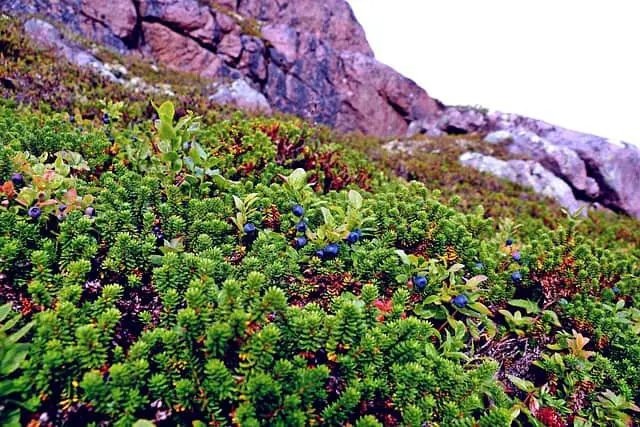
Lowbush Blueberries
When most people in North America think of blueberries, they picture the highbush blueberries found at grocery stores across the United States. New England residents are lucky enough to be surrounded by lowbush blueberry plants. These berries are very similar to the highbush variety when the berries are at their absolute best. Lowbush varieties tend to be more consistently sweet. They’re smaller than the highbush blueberries. Lowbush blueberries tend to be about the size of a pea. The lowbush plants are also smaller, growing closer to the ground. In fact, you could be standing in a field full of wild lowbush blueberries and not notice at first because the leaves of the plant are low to the ground and covering the berries themselves.
Wild blueberry plants may grow in dense forests, but they’re not going to be doing well, and the berries won’t taste great. You can find great wild blueberry bushes growing in large fields or along roadsides. They are often found in gravelly soils. They love sunny areas. Be aware that if the wild blueberries are growing along a roadside, they may be exposed to a lot of pollution from cars or be getting sprayed with herbicides to keep them away from the road, in which case they wouldn’t be safe to eat. It’s much better to seek these edible berries out in large open fields.
There are two main types of wild blueberries growing in New Hampshire. In the southern part of the state, you’ll find vaccinium angustifolium. These are the most common in New Hampshire. They have smooth stems and leaves. The berries can vary from light blue to jet black. The other type is vaccinium myrtilloides. These are sometimes called velvet huckleberries because they look like a huckleberry with a more velvet texture. They are most easily distinguished from other berries by the white hairs growing on their stems and leaves. These are more commonly found in the northern parts of the state.
In New Hampshire, wild blueberry season is from late July to early September. Early August is the best time to go seek them out as they’ll have time to ripen, but the birds won’t have gotten them all yet.
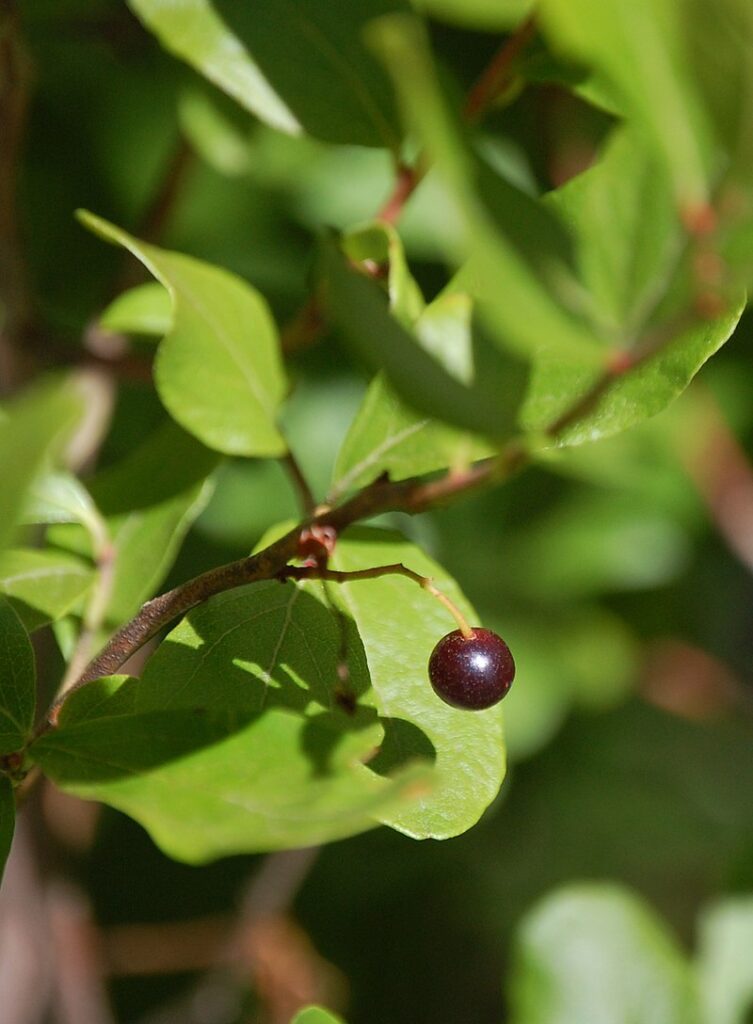
Huckleberries
If you’re already foraging for blueberries in New Hampshire, you should keep your eyes open for huckleberries. That is if you enjoy them. Huckleberries aren’t as sweet as blueberries and have large seeds in the center. This has made them a lot less popular with the general public, but there are definitely people who love these edible fruits.
Huckleberries are a bit rounder than blueberries, and the ones you’re likely to find in New Hampshire will be nearly black. Blueberries have a distinctive crown that huckleberries don’t have.
Huckleberries can also be found growing in sunny areas in August.
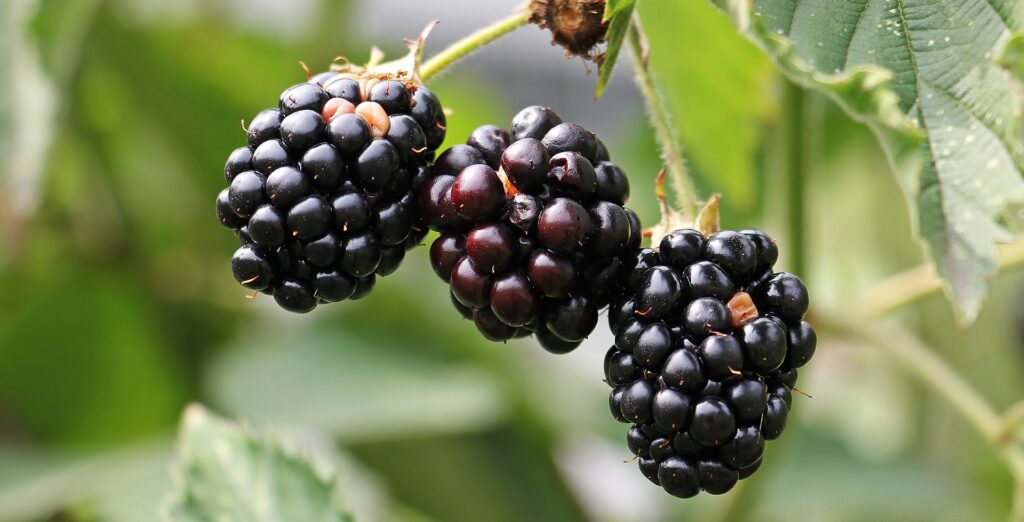
Blackberries
Wild blackberries are considered a nuisance by many because they grow so rapidly and will spread out in any area where they can. So if you see a blackberry bush growing along a roadside, there is a good chance that it has been hit with herbicide and may not be safe to eat. Instead, seek out blackberries growing in large fields, in the same places you may be finding huckleberries and blueberries.
Blackberries ripen in July and August, you may even luck into them in late June.
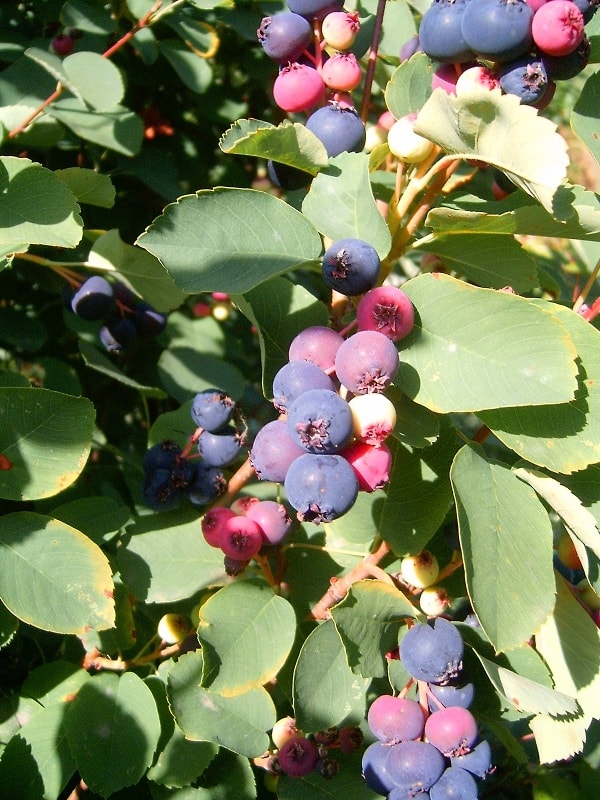
Serviceberries
Serviceberries are known as being the bringers of spring to New Hampshire. Serviceberry trees may still be looking dead from the cold winter months when their white flower buds appear in early spring.
There are many different varieties of serviceberries, which attributes to the long list of names these berries have acquired. They are known as shadbush, juneberry, saskatoon berries, sugarplums, wild-plum, shadblow, and amelanchier, just to name a few. They grow as small trees or as shrubs. Both of these varieties can be found in New Hampshire. The plants have green leaves, gray bark, white flowers, and blue fruits that are packed with vitamin C.
Native Americans would dry serviceberries and combine them with pounded dried meat to make pemmican, a food that got them through long winters or voyages.
Serviceberries are ripe for picking in late June and early July. Birds love them, so there is competition to be had for these edible fruits.
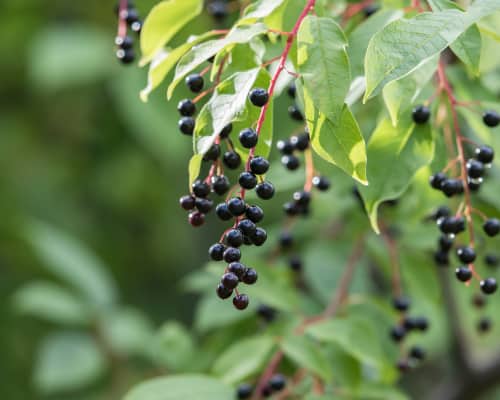
Chokecherries
Chokecherries are one of the edible foods you can find growing wild in New Hampshire. They are a favorite of many locals who grew up enjoying them. While they are edible, the leaves, bark, stems, and especially the pits, need to be avoided. Chokecherry pits are poisonous, like the pits of common cherries, apricots, plums, peaches, and apples.
The pits contain amygdalin. If the pit has a crack in it and opens, the body will start processing amygdalin and convert it into cyanide. Side effects of eating chokecherry pits can include headaches, stomach trouble, changes in heart rate, and convulsions.
While some people grew up swallowing the seeds whole, it’s better to be safe and spit them out as you enjoy the fruit.
Chokecherry plants are small shrubs that grow in the full sun, so you’ll find them along roadsides or at the edge of forests.
Many people commonly eat chokecherries before they’re actually ripe. While you can do this, the berry is going to taste very bitter. To find ripe chokeberries, look for fruits that are very dark purple or nearly black. You’ll find these in late August or early September in New Hampshire.
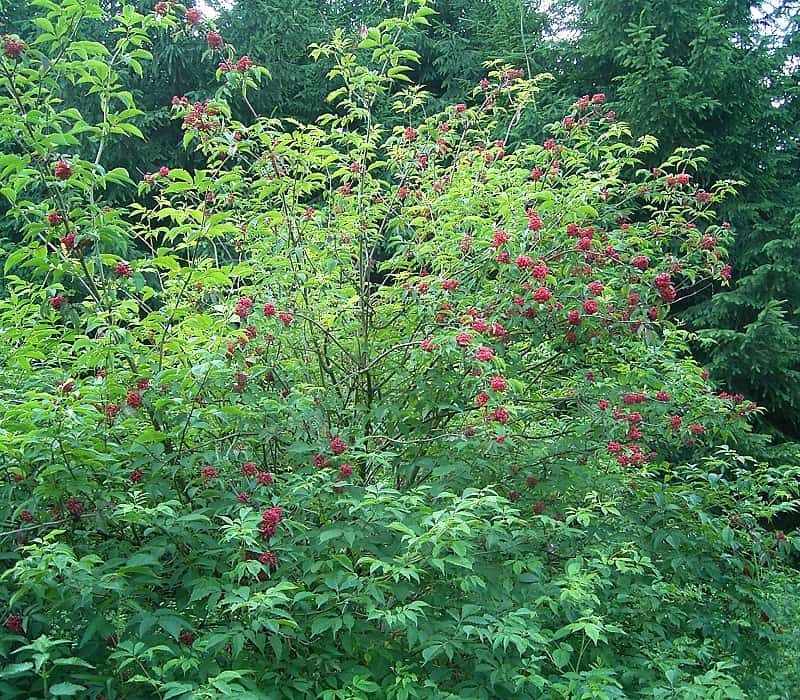
Scarlet Elder
Scarlet elder grows as a shrub from six to twelve feet tall. In the early spring, you’ll see white buds. In the middle of summer, you’ll find bright red berries growing on these bushes in thick clusters. These bushes are tolerant of the shade and enjoy well-drained soils, so you’ll find them in forests in New England. You may see them along old logging roads. You may also find them in people’s home gardens. They’re very popular because the flowers bloom before many others in the area, and the red berries are pretty to look at.
The fruit ripens on these bushes in June and July, so you can seek them out before the big huckleberry, blackberry, and blueberry season of August.
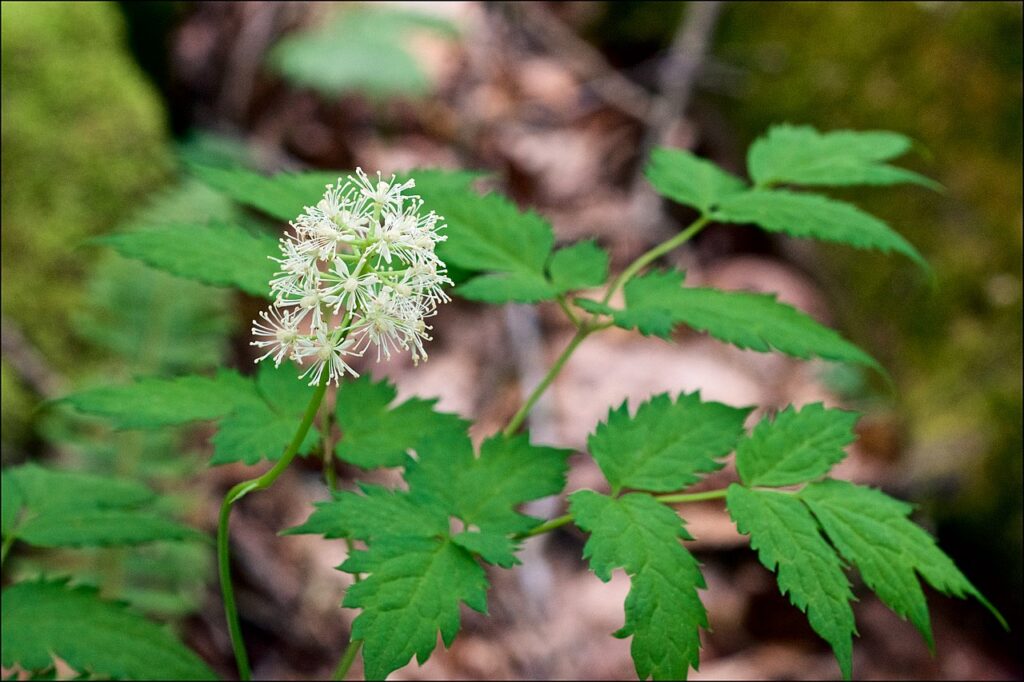
Eric Hunt, CC BY-SA 4.0, via Wikimedia Commons
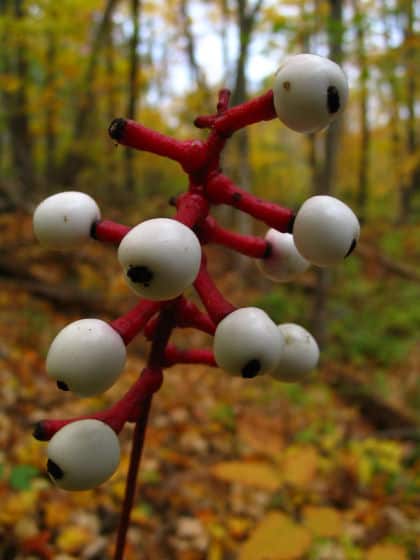
Robert E. Wright, CC BY-SA 3.0, via Wikimedia Commons
Avoid White Baneberry -They Are Poisonous Berries
There are two kinds of baneberry, white and red. White baneberry is a native plant to New Hampshire. All parts of the white baneberry plant are considered toxic, but the berries are especially poisonous and need to be avoided. Many sources say that even a few berries can cause severe symptoms. Large quantities can cause cardiac arrest, dizziness, diarrhea, hallucinations, and trouble breathing.
The plant is sometimes known as doll’s eyes because of the way the berries look. White baneberry berries are white with a single black dot, looking like the eyes of a doll.
They taste very bitter, so it’s not common for people to eat them, but they are white and flashy, and that sometimes draws the attention of children, which can be dangerous. Never eat white baneberry, but if an accident happens, be sure to contact poison control and/or a medical professional immediately.
Wild Berries In New Hampshire
There are plenty of edible berries to be found in the wilds of this small New England state. The more practice you gain in correctly identifying the berries, the more you’ll find to enjoy. Always use multiple sources to identify berries, especially when you’re doing this for the first time.
Recent Posts
The only venomous snakes in Washington State are Northern Pacific Rattlesnakes. The Northern Pacific Rattlesnake (Crotalus oreganus oreganus) is a sub-species of the Western Rattlesnake. Anyone...
Skunks are not classified as true hibernators. But they go into a state of torpor when the weather gets cold. Skunks are light sleep hibernators, along with opossums, bears, and raccoons. ...

